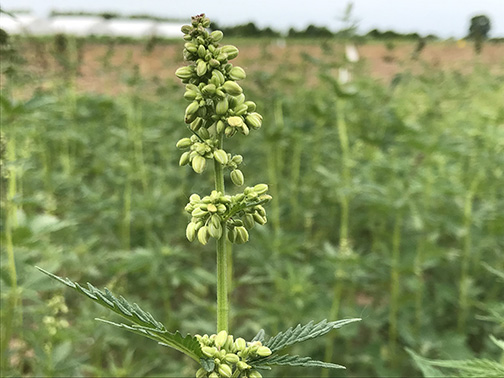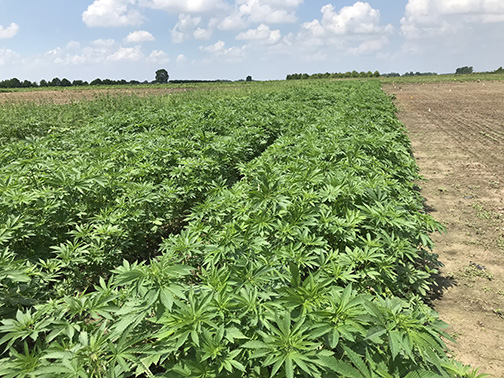Both fiber, grain, and CBD hemp farmers are continuing to struggle with the wet weather and some fields remain unplanted. Sunstrand, a fiber processing company in Kentucky working with fiber farmers in the state, has realized that biomass goals will need to be adjusted because of the weather. Some growers have been able to get decent stand establishment and fiber hemp is up to three feet tall in some fields. Some of our fiber plots at Meigs farm are approaching three feet in height as well.
For farmers growing hemp for grain, we have encountered issues with early season flowering like previous years. Hemp is a short-day plant, meaning flowering occurs when daylength is less than 12-14 hours, however this is variable across cultivars (Sankari and Mela 1998). The period prior to flowering is the vegetative growth phase, a crucial part of the plant acquiring nutrients and producing resources that can be transferred to developing seeds after pollination occurs. The available grain cultivars have been bred for northern latitudes and we observe flowering approximately four weeks after planting. Legacy Hemp, a hemp seed distributor, has not commented on their recommendations for early flowering, but they have asked farmers to delay planting because of the rain.
There have been mixed reports of how the CBD hemp crop looks, and some growers have been unable to plant due to flooded fields. I have received reports of stressed plants likely due to transplant shock and the presence of aphids, leaf hoppers, and powdery mildew on clones. Because there are no registered pesticides (including organic pesticides) for use in hemp, controlling pathogens and insects is going to be challenging as we try to develop management recommendations. Starting with good stock that is healthy and free of pests will be crucial as this industry develops.
Related References
Purdue Hemp Website. https://dev.purduehemp.org/hemp-production/
Sankari H. and Mela TJN. 1998. Plant development and stem yield of non-domestic fibre hemp (Cannabis sativa L.) cultivars in long-day growth conditions in Finland. Journal of Agronomy and Crop Science 181: 153-159.




